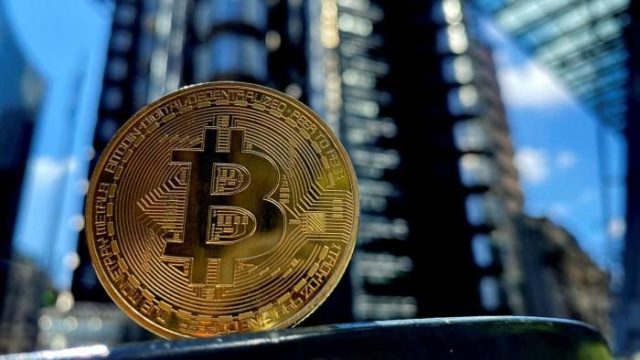- Housing starts and building permits exceeded expectations.
- All eyes are now on the Fed's dot plot update on Wednesday, which already assumes a pause in interest rates.
- US Treasury yields decline but remain at multi-week highs.
The US Dollar Index (DXY) fluctuates around 104.00, posting gains ahead of Wednesday's impending Federal Open Market Committee (FOMC) meeting. This is the highest level since March 1. Markets are awaiting new guidance, and if the Federal Reserve (Fed) updates its dot chart or Chairman Jerome Powell gives any dovish signals, the Dollar could resume its bearish trend.
Meanwhile, Fed officials remain cautious about rushing too soon to start cutting as inflation remains persistent, which also appears to provide support for the USD. The new guidelines on Wednesday and the data that are known will continue to set the pace of the Dollar in the short term.
Daily Market Moves Summary: DXY Extends Gains on Strong Housing Data Ahead of Fed Decision
- The US Census Bureau reported a 10.7% month-over-month increase in the number of housing starts in February, a rebound from -12.3% in the previous report.
- Construction permits (February) stood at 1,521 million, above the 1,425 million expected.
- The market currently expects the Fed to maintain its aggressive monetary policy line, with a 10% chance of cutting rates in May and a 65% chance in June, although these odds could change following Wednesday's FOMC decision.
- The 2-year yield currently stands at 4.70%, the 5-year yield at 4.31%, and the 10-year yield at 4.30%.
DXY Technical Analysis: DXY Sees Bulls Dominate the Market
The technical indicators on the daily chart reflect a positive bias. The Relative Strength Index (RSI), with a positive slope in positive territory, signals increasing bullish strength. At the same time, the moving average convergence divergence (MACD) histogram shows ascending green bars, further confirming the dominance of buying momentum.
The simple moving averages (SMA) further reinforce this bullish outlook. The DXY is now above the convergence of the 20,100 and 200-day SMA, near the 103.50-70 zone, suggesting that the bulls are in control of the bigger picture.
Given these signals, a snapshot of the current technical outlook implies that bulls are generally gaining ground. However, bulls must create strong support above the mentioned SMAs to consolidate their moves.
Frequently asked questions about central banks
What does a central bank do?
Central banks have a key mandate to ensure price stability in a country or region. Economies constantly face inflation or deflation when the prices of certain goods and services fluctuate. A constant rise in the prices of the same goods means inflation, a constant fall in the prices of the same goods means deflation. It is the central bank's job to keep demand in line by adjusting its interest rate. For the largest central banks, such as the US Federal Reserve (Fed), the European Central Bank (ECB) or the Bank of England (BoE), the mandate is to keep inflation close to 2%.
What does a central bank do when inflation is below or above the expected target?
A central bank has an important tool to raise or lower inflation: modify its reference interest rate. At pre-communicated times, the central bank will issue a statement with its reference interest rate and give additional reasons why it maintains or modifies it (cuts or raises it). Local banks will adjust their savings and loan rates accordingly, which in turn will make it harder or easier for citizens to make a profit on their savings or for companies to borrow and invest in their businesses. When the central bank substantially raises interest rates, we speak of monetary tightening. When you reduce your reference rate, it is called monetary easing.
Who decides monetary policy and interest rates?
A central bank is usually politically independent. Members of the central bank's policy council go through a series of panels and hearings before being appointed to a position on the policy council. Each member of that council usually has a certain conviction about how the central bank should control inflation and the subsequent monetary policy. Members who want a very loose monetary policy, with low rates and cheap loans, to substantially boost the economy, while settling for inflation slightly above 2%, are called “doves.” Members who prefer higher rates to reward savings and want to control inflation at all times are called “hawks” and will not rest until inflation is at 2% or just below.
Is there a president or head of a central bank?
Typically, there is a chairperson who leads each meeting, has to create a consensus among the hawks or doves, and has the final say when votes need to be divided to avoid a 50-50 tie on whether to adjust current policy. The president will give speeches, which can often be followed live, in which he will communicate the current monetary stance and outlook. A central bank will try to push its monetary policy forward without causing wild swings in rates, stocks, or its currency. All central bank members will channel their stance toward markets ahead of a monetary policy meeting. A few days before a monetary policy meeting is held and until the new policy has been communicated, members are prohibited from speaking publicly. This is what is called the silent period.
Source: Fx Street
I am Joshua Winder, a senior-level journalist and editor at World Stock Market. I specialize in covering news related to the stock market and economic trends. With more than 8 years of experience in this field, I have become an expert in financial reporting.







